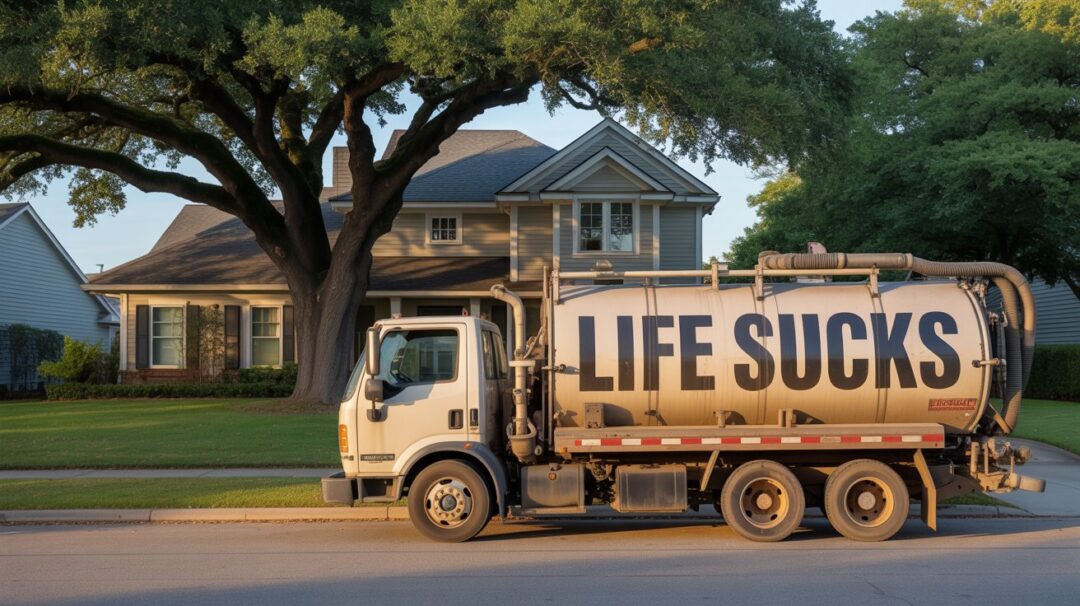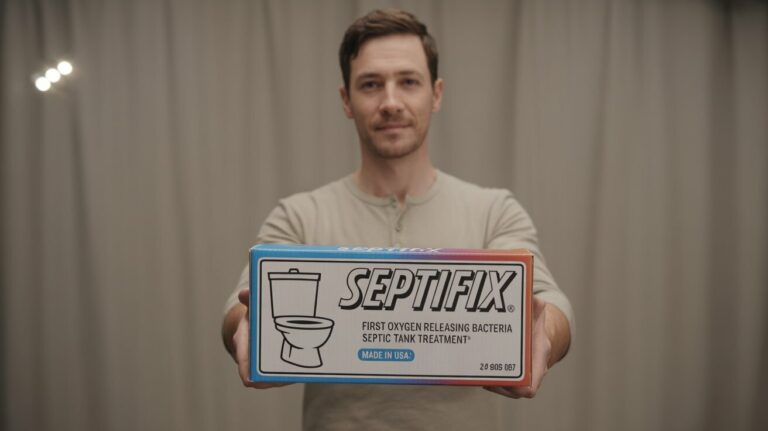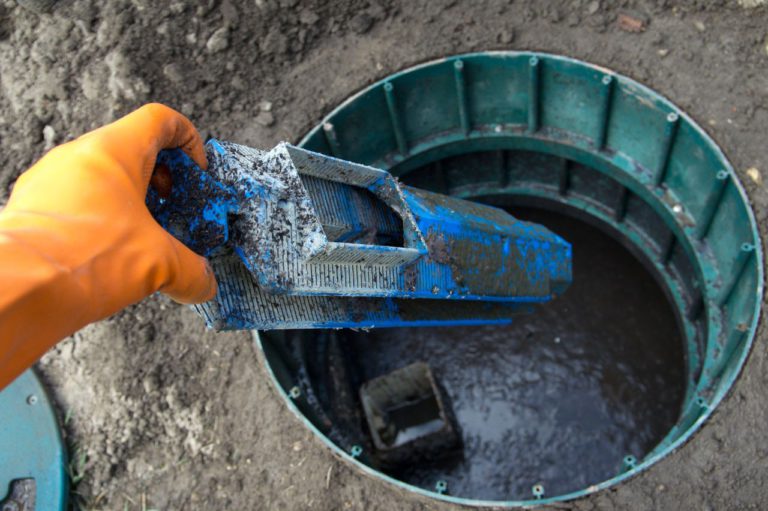Common Septic Tank Issues: Early Signs, Fixes, and How to Prevent Costly Disasters
Your septic system works silently beneath your property, processing household waste day after day. When functioning properly, it’s easy to forget it exists. But when septic tank issues arise, they quickly demand your attention with unpleasant odors, backed-up drains, and potentially thousands in repair costs.
Understanding how your septic system works is the first step toward preventing problems. In a typical setup, waste flows from your home into an underground tank where bacteria break down solids. The liquid effluent then disperses through a drain field into the surrounding soil. This simple but effective system requires balance to function properly.
In this comprehensive guide, we’ll explore the most common septic tank issues homeowners face, how to spot early warning signs, and practical solutions that can save you from costly emergency repairs. We’ll also share preventative maintenance tips, including how products like Septifix tablets can help maintain your system’s health for years to come.

Slow Drains and Gurgling Sounds
One of the earliest warning signs of septic tank issues is slow-draining fixtures throughout your home. When sinks, showers, and bathtubs take longer than usual to empty, it’s often your septic system sending you a message.
Symptoms to Watch For
Slow drainage: Water taking longer than usual to drain from sinks, tubs, and showers
Gurgling noises: Strange sounds coming from drains, toilets, or pipes
Multiple affected fixtures: Problems occurring in several drains simultaneously
Intermittent issues: Problems that worsen after heavy water usage

Common Causes
- Buildup of solids in the inlet baffle or pipe leading to your septic tank
- Full septic tank that needs pumping
- Clogged effluent filter preventing proper flow
- Biomat buildup in the drain field restricting absorption
- Tree root infiltration in pipes or tank
Immediate Fixes
If you’re experiencing slow drains, try these solutions before calling a professional:
- Reduce water usage temporarily to give your system time to catch up
- Check and clean the effluent filter if your system has one (wear gloves!)
- Use a septic-safe enzyme treatment to help break down buildup
- Inspect for and remove any obvious clogs in accessible pipes

Prevention Tips
To prevent slow drains and gurgling sounds in the future:
- Schedule regular septic tank pumping every 3-5 years
- Be mindful of what goes down your drains (no grease, coffee grounds, or non-flushable items)
- Install drain screens to catch hair and debris
- Use septic-safe cleaning products
- Add beneficial bacteria monthly with products like Septifix tablets to maintain proper breakdown of waste
Bad Odors Inside or Outside Your Home
Foul odors resembling rotten eggs or sewage are never normal and indicate a problem with your septic system that needs attention. These unpleasant smells can appear inside your home from drains or outside near your septic tank or drain field.

Symptoms to Watch For
- Sulfur or rotten egg smell from drains
- Sewage odor inside your home, especially near drains
- Persistent foul smell in your yard, particularly over the drain field or tank
- Odors that worsen after rainfall or heavy water usage
Common Causes
Dry P-traps: Allowing sewer gases to enter your home
Failed seal: Around the toilet base or pipe connections
Bacterial imbalance: In the septic tank reducing waste breakdown
Full tank: Needing to be pumped
Clogged vent pipe: Preventing proper air circulation
Drain field issues: Including saturation or clogging
Cracked pipes: Allowing sewage to leak
Tank damage: Including cracks or baffle failure
Immediate Fixes
- Run water in rarely used sinks to refill dry P-traps
- Check and replace the wax ring seal on toilets if necessary
- Inspect and clear any blocked vent pipes on your roof
- Add a bacterial treatment like Septifix to restore proper bacterial balance
- Have your tank inspected and pumped if it’s been more than 3-5 years
Prevention Tips

To keep your septic system odor-free:
- Maintain a regular pumping schedule
- Use septic-safe toilet paper and cleaning products
- Avoid pouring grease, oils, or chemicals down drains
- Run water in rarely used fixtures monthly to keep P-traps full
- Add Septifix tablets monthly to maintain healthy bacterial levels
Real Results from Real Homeowners
Wondering if Septifix really works for odor control? See how other homeowners with septic systems have eliminated persistent smells and prevented future issues.
Sewage Backups in Toilets or Drains
Perhaps the most alarming septic tank issue is when wastewater backs up into your home through toilets, sinks, or shower drains. This unsanitary situation requires immediate attention to prevent property damage and health hazards.

Symptoms to Watch For
- Toilets backing up when flushed
- Multiple drains backing up simultaneously
- Wastewater coming up through shower or bathtub drains
- Sewage odors accompanying backup issues
- Backups that worsen after heavy water usage
Common Causes
Full septic tank: The most common cause of backups
Clogged inlet pipe: Preventing waste from entering the tank
Blocked outlet or baffle: Restricting flow from tank to drain field
Drain field failure: Unable to absorb effluent properly
Hydraulic overload: Too much water entering system at once
Tree root infiltration: Creating blockages in pipes
Immediate Fixes
Warning: Sewage backups contain harmful bacteria and pathogens. Always wear protective gear when cleaning up, and consider hiring professionals for significant backups.
- Stop using water in your home immediately
- Call a septic professional for emergency pumping
- Clean affected areas with appropriate disinfectants
- Have the system inspected to determine the root cause
Prevention Tips

To prevent future sewage backups:
- Stick to a regular pumping schedule (every 3-5 years)
- Conserve water during heavy usage periods
- Avoid flushing anything other than human waste and toilet paper
- Install an effluent filter if your system doesn’t have one
- Use bacterial additives like Septifix to maintain proper waste breakdown
- Consider installing a backwater valve to prevent sewage from flowing back into your home
Standing Water Near the Drain Field
Puddles or soggy areas over your drain field are clear indicators that your septic system isn’t properly absorbing effluent. This issue not only creates an unsightly yard problem but can also lead to more serious system failures if not addressed.

Symptoms to Watch For
- Pools of water over the drain field area
- Soggy, spongy ground when walking over the area
- Unusually lush, green grass over the drain field
- Persistent wetness even during dry weather
- Sewage odors near the standing water
- Water issues that worsen after heavy usage or rainfall
Common Causes
- Hydraulic overload from excessive water use
- Biomat buildup clogging soil absorption
- Compacted soil over the drain field
- High water table or poor soil percolation
- Damaged distribution box not evenly dispersing effluent
- Tree roots infiltrating drain field pipes
Immediate Fixes
- Reduce water usage significantly to allow the drain field to dry out
- Have your tank pumped to relieve pressure on the system
- Inspect for and repair any damaged distribution box issues
- Consider installing additional drainage around the drain field area
- In severe cases, consult with a professional about drain field rejuvenation options
Prevention Tips
To keep your drain field functioning properly:
- Avoid driving or parking vehicles over the drain field
- Don’t build structures or plant trees over the area
- Divert roof drains and surface water away from the drain field
- Practice water conservation to prevent overloading
- Use Septifix tablets regularly to break down biomat and improve soil absorption
- Schedule professional inspections every 1-2 years
Well Water Contamination
If your property has a well, septic tank issues can potentially contaminate your drinking water. This serious health hazard requires immediate attention and testing to ensure your water remains safe for consumption.

Symptoms to Watch For
- Unusual taste, odor, or color in your well water
- Positive tests for coliform bacteria or E. coli
- Elevated nitrate or nitrite levels in water tests
- Gastrointestinal illness among household members
- Simultaneous septic system and well water issues
Common Causes
Inadequate distance: Between septic system and well
Cracked septic tank: Leaking contaminants into soil
Failing drain field: Not properly filtering effluent
High water table: Allowing contamination to reach groundwater
Well casing issues: Allowing surface contamination
Improper system design: Not accounting for soil conditions
Immediate Fixes
Warning: If you suspect well contamination, stop drinking the water immediately and use bottled water until testing confirms safety.
- Have your well water professionally tested for bacteria and nitrates
- Inspect both your well and septic system for obvious issues
- Have your septic tank pumped and inspected for leaks
- Consider well water treatment options if contamination is confirmed
- Consult with environmental health officials about remediation
Prevention Tips
To protect your well water from septic contamination:
- Maintain proper distance between well and septic system (at least 50-100 feet)
- Test well water annually for bacteria and nitrates
- Keep septic system properly maintained with regular pumping
- Use bacterial additives like Septifix to ensure proper waste breakdown
- Avoid using harsh chemicals that could kill beneficial bacteria
- Consider upgrading older septic systems that may not meet current codes
Preventative Solutions: Keep Septic Problems from Coming Back
The best way to deal with septic tank issues is to prevent them from occurring in the first place. A proactive maintenance approach can save you thousands in emergency repairs and extend the life of your system by many years.

Regular Pumping Schedule
The single most important maintenance task is regular pumping:
- For average households (3-4 people): Every 3-5 years
- For larger households: Every 2-3 years
- For vacation homes or minimal usage: Every 5-7 years
- Keep records of pumping dates and service reports
- Schedule your next pumping before leaving the current service
Water Conservation Strategies
Reducing water load helps your system function properly:
- Fix leaky faucets and running toilets promptly
- Install water-efficient fixtures and appliances
- Spread laundry loads throughout the week
- Take shorter showers instead of baths
- Run dishwashers and washing machines only when full
- Install faucet aerators to reduce water flow
Proper Waste Disposal
Be mindful of what goes down your drains:
Safe for Septic Systems
- Human waste
- Toilet paper (septic-safe)
- Gray water from normal bathing
- Biodegradable soaps in moderation
Harmful to Septic Systems
- Grease, oils, and fats
- Coffee grounds and food scraps
- Feminine hygiene products
- Harsh chemicals and cleaners
- Paints and solvents
- “Flushable” wipes (they’re not truly flushable)
Drain Field Protection
Safeguard your drain field with these practices:
- Never park or drive vehicles over the drain field
- Avoid planting trees or shrubs near the area (roots can damage pipes)
- Don’t build structures, patios, or pools over the drain field
- Divert rainwater runoff away from the area
- Keep a diagram of your system’s location for reference
Bacterial Balance Maintenance
Keep beneficial bacteria thriving in your system:
- Limit use of antibacterial soaps and cleaners
- Avoid pouring bleach or harsh chemicals down drains
- Never flush medications or antibiotics
- Use septic-safe cleaning products
- Add beneficial bacteria regularly with products like Septifix
Why Homeowners Trust Septifix for Septic Tank Issues
While regular pumping and proper usage habits are essential, maintaining the bacterial ecosystem in your septic tank is equally important. Septifix tablets offer a simple, effective solution for supporting your septic system’s natural processes.
Unlike harsh chemical treatments that can damage your system, Septifix works with nature by introducing oxygen-releasing compounds and billions of aerobic bacteria that efficiently break down waste and neutralize odors.
How Septifix Helps Prevent Septic Tank Issues
- Oxygen Release: Each tablet releases up to 10 liters of oxygen to create an aerobic environment that speeds up waste breakdown
- Bacterial Boost: Introduces over 10 billion aerobic bacteria strains that digest waste more efficiently than anaerobic bacteria
- Odor Elimination: Neutralizes hydrogen sulfide and other compounds that cause foul septic odors
- Tank Protection: Reduces corrosion of concrete, pipes, and other system components
- Drain Field Support: Helps prevent biomat buildup that can clog soil absorption

Simple Monthly Maintenance
Using Septifix couldn’t be easier:
- Flush one tablet down your toilet each month
- No need to handle chemicals or messy liquids
- Safe for all types of septic systems
- Works continuously for 30+ days
“After years of dealing with septic odors and slow drains, I tried Septifix as a last resort before calling in expensive professionals. Within weeks, the smell was gone and my drains were flowing normally again. I’ve been using it monthly for over a year now with no septic issues whatsoever.”
See How Septifix Works for Others
Read real customer experiences and see before-and-after results from homeowners who’ve solved their septic tank issues with Septifix tablets.
Protect Your Septic System Today
Don’t wait for costly septic tank issues to disrupt your home and budget. Start your preventative maintenance plan with Septifix tablets and enjoy peace of mind knowing your system is protected.

Conclusion: Stay Ahead of Septic Tank Issues
Septic tank issues can quickly escalate from minor inconveniences to major financial burdens if left unaddressed. By recognizing early warning signs like slow drains, unusual odors, or wet spots in your yard, you can take action before small problems become expensive disasters.
Remember that prevention is always more affordable than repair. Regular pumping, careful water usage, proper waste disposal, and monthly bacterial treatments with products like Septifix create a comprehensive maintenance plan that will keep your septic system functioning properly for decades.
Your septic system is a significant investment in your property. With the right care and attention, it will serve you reliably for many years to come, protecting both your home’s value and your family’s health. Don’t wait for problems to appear—start your preventative maintenance plan today.






